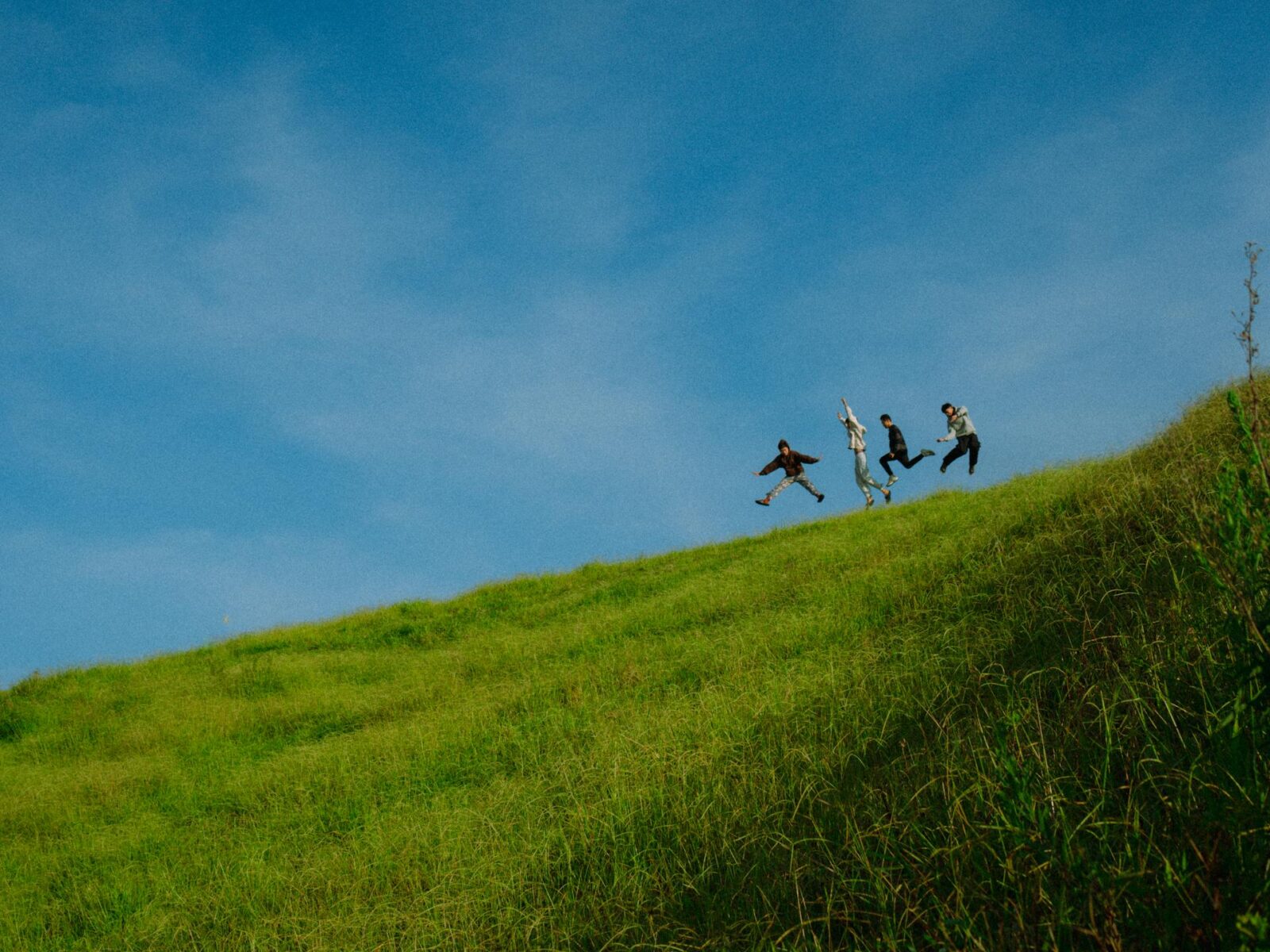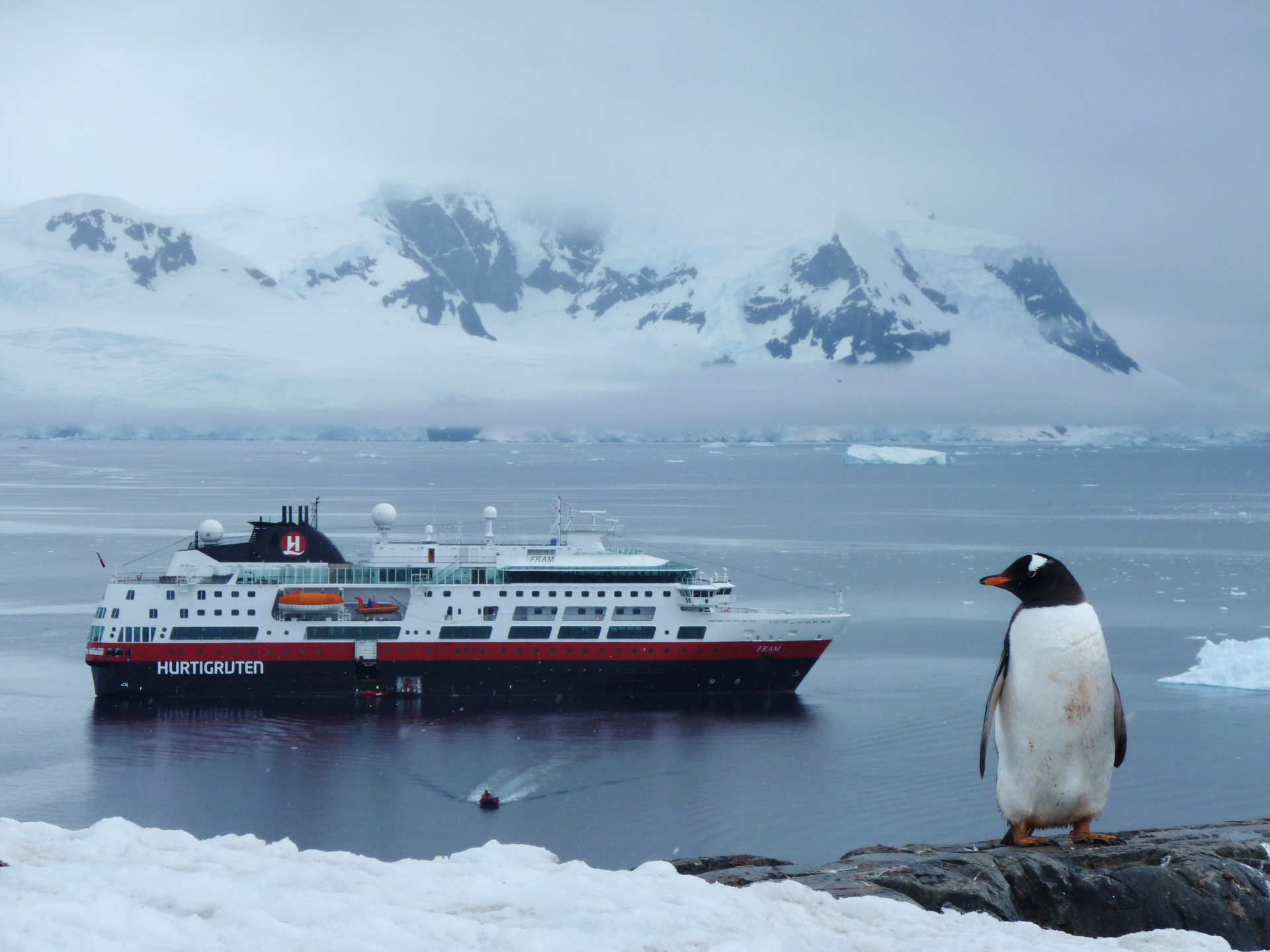Alice Springs and Uluru sit in the heart of Australia, surrounded by vast desert landscapes, ancient rock formations, and deep cultural connections. This region, often called Australia’s Red Centre, is home to some of Australia’s most iconic landmarks, including Uluru-Kata Tjuta National Park, the West MacDonnell Ranges, and Kings Canyon.
If you’re planning your first visit to the Northern Territory, you’ll want to know the best time to visit Alice Springs and Uluru. The climate in Central Australia is extreme, with hot weather in the summer months and cooler temperatures in the winter months. Choosing the right time of year can make your trip far more comfortable and memorable.
Best Time to Visit Alice Springs and Uluru
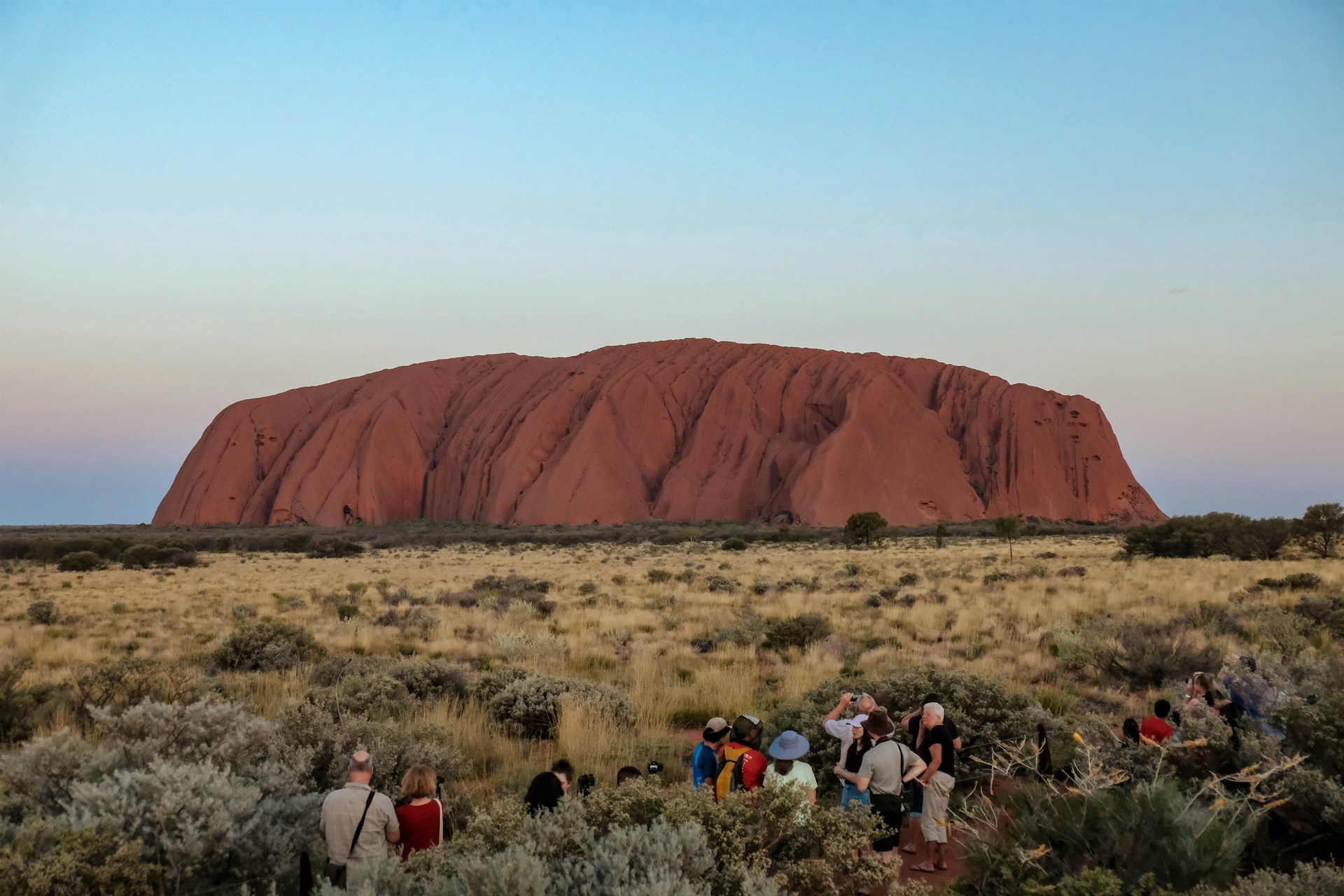
The best time of year to visit Alice Springs and Uluru is during the cooler months of May to September. This is the dry season, when you can expect warm days, clear skies, and cool nights, the perfect time for outdoor activities like hiking, sightseeing, and cultural experiences. Daytime temperatures during this period usually sit between 18°C and 25°C, making it a good time for long walks and exploring. Cool evenings mean you’ll need warm clothing, or a good idea is to bring warm clothes for stargazing or enjoying the desert’s crisp air after sunset. There’s little rain, making road trips in the Red Centre far more manageable.
Best Month to Visit
If you’re after the best month, August often provides the most sunny days with average temperatures ranging from cool mornings to comfortable afternoons. It’s also when the park’s wildflowers begin to bloom, adding vibrant colour to the desert.
Less Desirable Times to Visit
The summer months (December to February) are considered the worst time to visit. The hot season can bring high temperatures, sometimes exceeding 40°C. These hottest months can make long walks dangerous, and you’ll need plenty of water, a protective head net or face net for flies, and shaded breaks. This different experience might suit adventurous travellers, but it can add an extra cost if you need more tours, transfers, or air-conditioned comfort. The wettest month is usually February, with unpredictable storms. This is the wet season in the Top End around Kakadu National Park and in the Red Centre. During this time, you can expect short bursts of rain rather than constant showers.
Experience Uluru with These Incredible Tours
Best Things to Do in Alice Springs and Uluru

Even if you’ve chosen the perfect time to visit, knowing the best things to do can help you build the ideal Uluru itinerary.
Explore Uluru-Kata Tjuta National Park
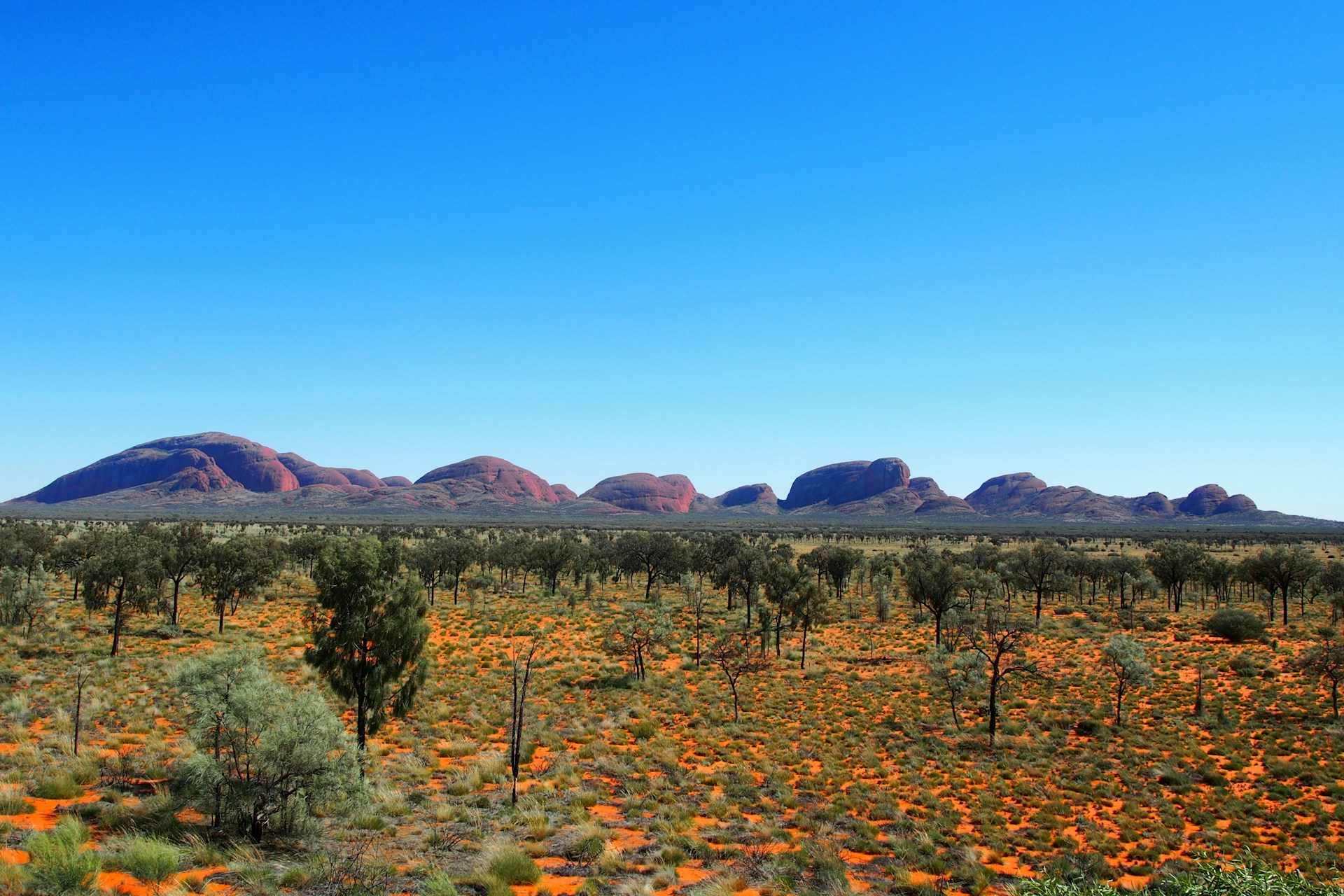
Uluru-Kata Tjuta National Park is one of Australia’s most iconic landmarks and a place of immense cultural value for its traditional owners, the Anangu people. The park is home to Uluru, the massive sandstone monolith, and Kata Tjuṯa, a striking group of domed rock formations, offering travellers a mix of natural beauty, indigenous culture, and unforgettable outdoor activities. It’s important to note that a national park pass is required.
We recommend to:
- Take the Uluru Base Walk, a great way to experience the rock up close while learning about its cultural value from the traditional owners.
- Join a Mala Walk with a tour guide to hear about indigenous culture and the stories of the land.
- Visit Kata Tjuṯa, a cluster of domed rock formations, and hike the Valley of the Winds.
- Watch the sun rise or set over Uluru for a true bucket list moment.
Field of Light
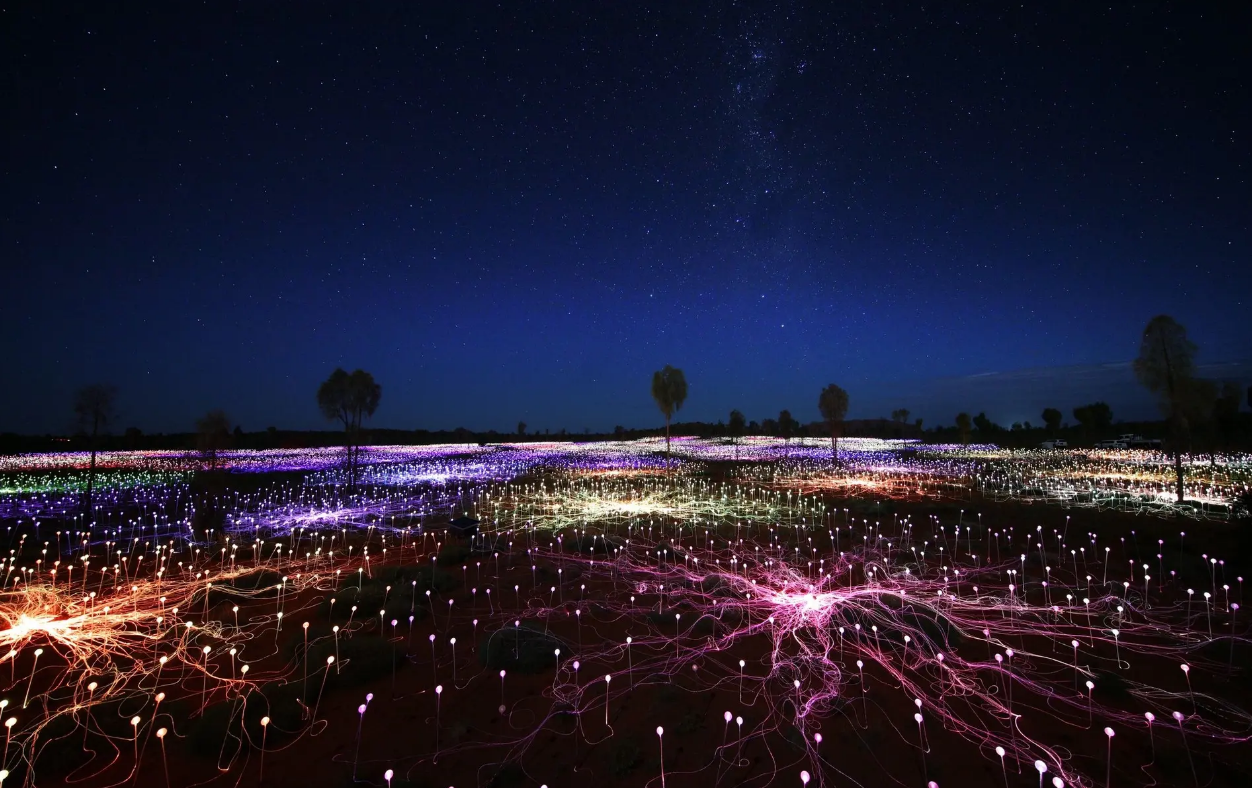
Bruce Munro’s Field of Light, located at the Ayers Rock Resort, is a solar-powered display of 50,000 glowing stems that light up the desert after sunset. You can choose from different ticket options: a self-guided walk, a Star Pass with drinks and canapés at a viewing area, or a dinner experience under the stars with a three-course meal before exploring the artwork. The perfect time to visit is just after sunset, when the lights slowly come to life against the desert’s clear skies.
Kings Canyon
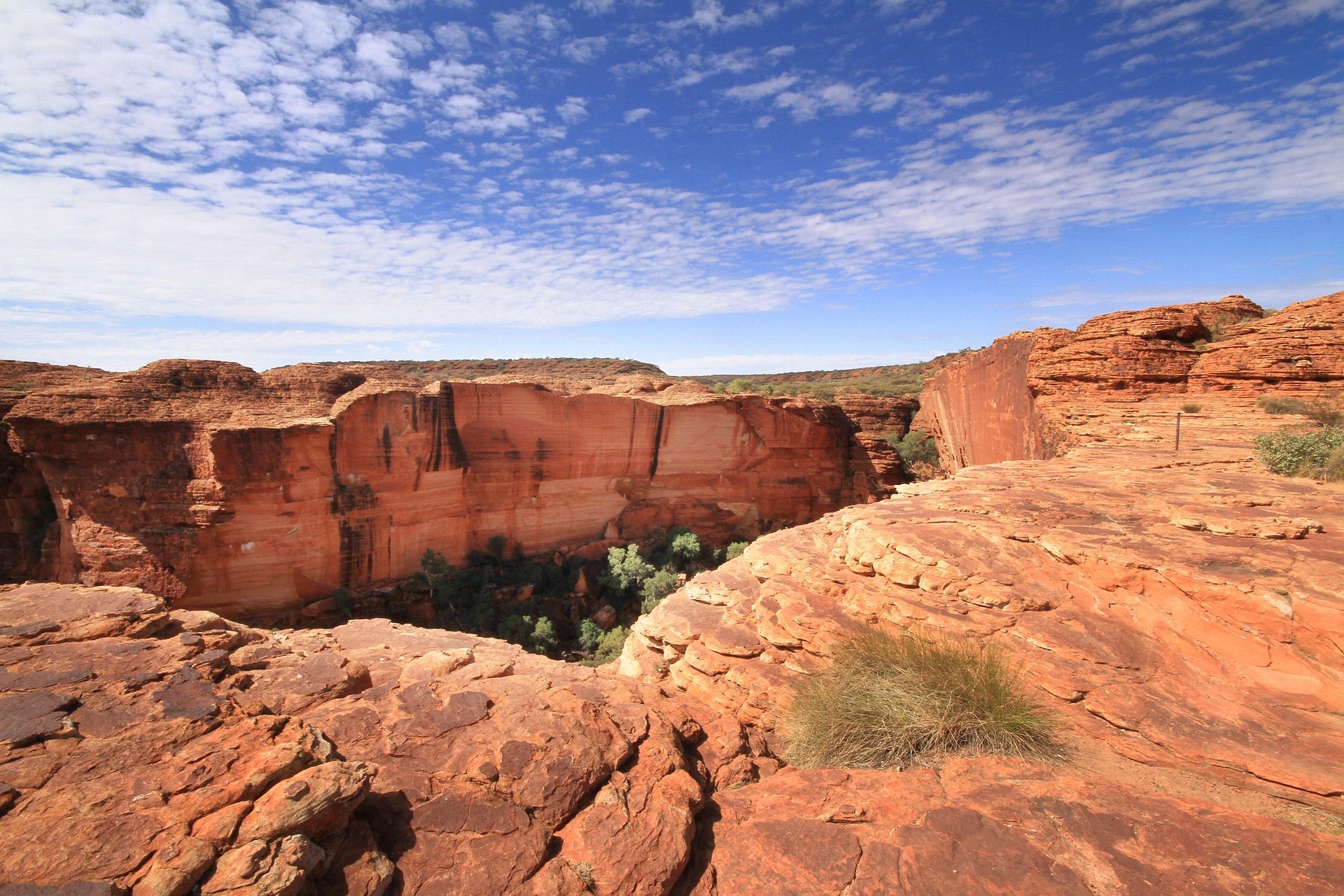
Part of Watarrka National Park, Kings Canyon is often described as one of the most spectacular landscapes in the Australian Outback. Towering sandstone walls rise above lush palm-filled valleys, creating a dramatic contrast against the surrounding desert. It’s a bucket list stop on the Red Centre Way and a great way to break up the journey between Alice Springs and Uluru.
The most popular hike is the Kings Canyon Rim Walk (about 6 km, 3–4 hours). Starting with a steep climb, it rewards you with sweeping views across the canyon and surrounding plains. Highlights along the way include: Priscilla’s Crack, The Lost City and The Garden of Eden.
For a shorter option, the Kings Creek Walk (2 km return) follows the canyon floor, offering a gentler way to experience the area’s cliffs and vegetation.
Travel Tip: The perfect time to hike is in the early morning during the cooler months, when daytime temperatures are more comfortable. In the hot season, the Rim Walk may close after 9 a.m. due to high temperatures, so starting early and carrying plenty of water is essential.
West MacDonnell Ranges
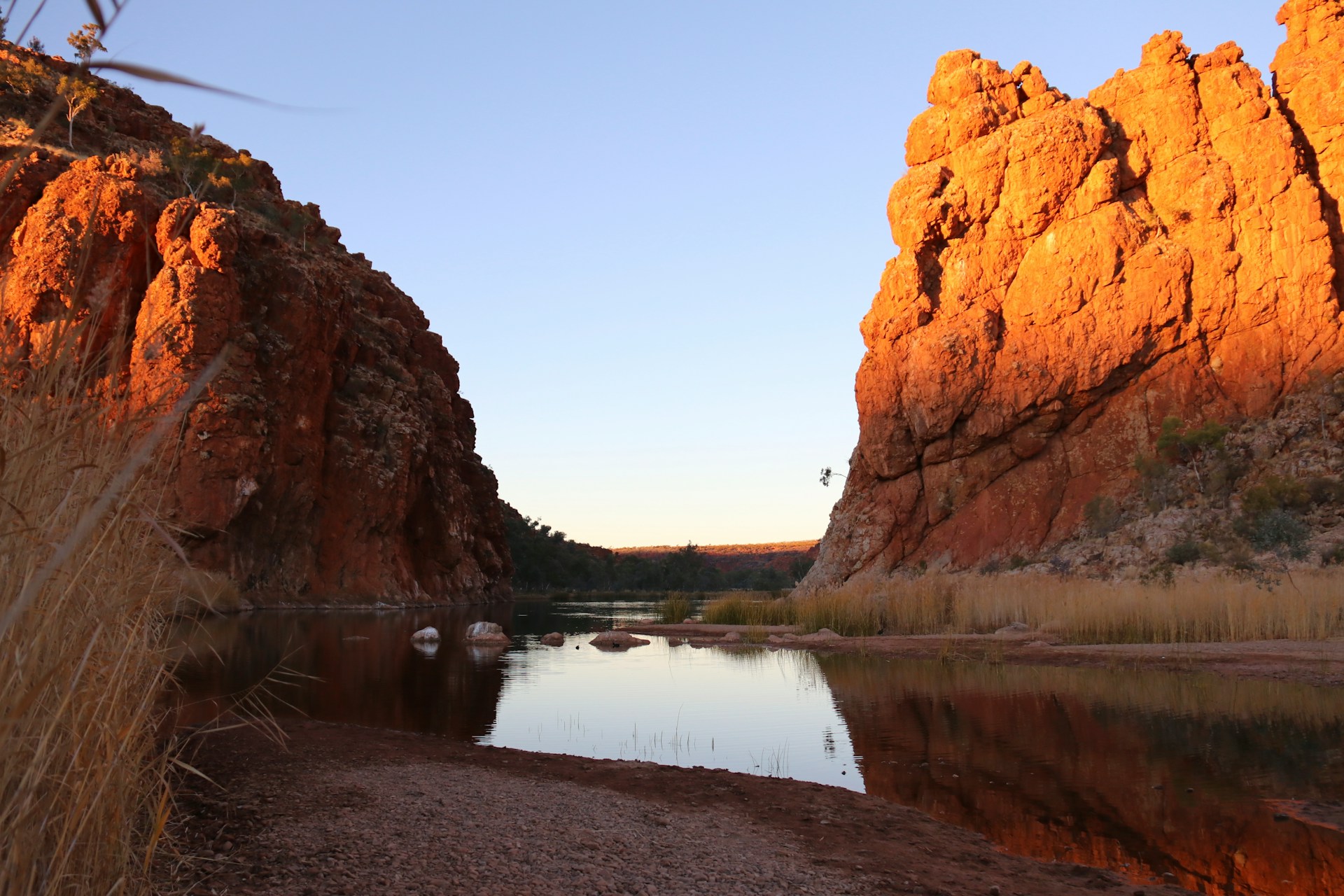
Stretching west from Alice Springs, the West MacDonnell Ranges are a rugged chain of mountains carved with gorges, waterholes, and walking trails. They’re a highlight of Central Australia, and exploring them is a great way to experience the outback’s natural beauty.
Some of the best places to visit include:
- Simpsons Gap – a dramatic gorge with towering cliffs, best visited in the early morning or cool evenings when black-footed rock wallabies often appear.
- Standley Chasm – famous for its narrow rock walls that glow red in the midday sun.
- Ellery Creek Big Hole – a popular swimming spot, a refreshing stop on hot days.
- Ormiston Gorge – home to excellent hiking trails and one of the most reliable permanent waterholes in the ranges.
- Glen Helen Gorge – a beautiful place to pause, enjoy the scenery, and soak in the atmosphere of the ranges.
The area is full of outdoor activities, from short walks to full-day hikes. It’s also one of the best ways to see desert wildlife and the park’s wildflowers, especially after a little rain.
Alice Springs
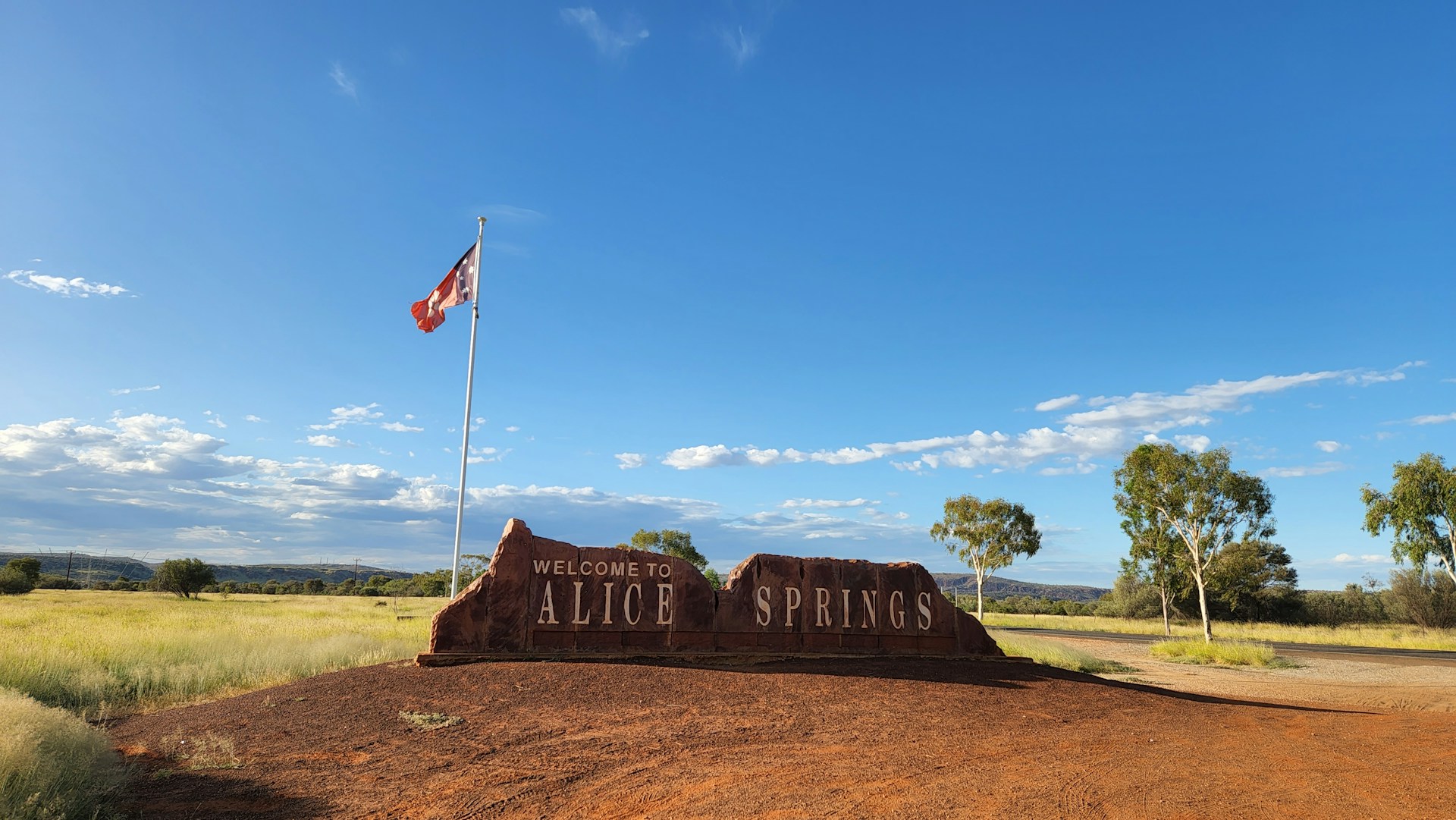
Often called the gateway to the Red Centre, Alice Springs is more than just a transit point. It’s a lively town rich in indigenous culture, history, and outback charm. Flying into Alice Springs Airport is a good way to prepare for your journey, stock up at a petrol station, and learn about the region before heading deeper into the desert.
- Visit the Alice Springs Desert Park, where you can learn about desert weather conditions, wildlife, and Aboriginal traditions.
- Explore the Araluen Cultural Precinct, with galleries showcasing Central Australian art and stories.
- Take a sunrise hot air balloon ride for a different experience of the outback landscape.
- Stroll through the Olive Pink Botanic Garden, home to native desert plants and birdlife.
- Walking to Anzac Hill for panoramic views over the town and ranges, especially striking at sunrise or sunset.
Spending at least a day here is a good idea, especially if it’s your first time in the Red Centre. It gives you context and appreciation for the landscapes you’ll see as you head toward Uluru-Kata Tjuta National Park and beyond.
Explore More on These Tours
How Long to Spend in Alice Springs and Uluru

One of the most common questions travellers ask is: How much time do I need in the Red Centre? The answer depends on whether you want a quick highlights trip or a deeper, different experience exploring both Alice Springs and Uluru-Kata Tjuta National Park.
For most visitors, it’s a good idea to allow at least three days in the region. This gives you enough time to experience the best places without rushing and to balance sightseeing with relaxation.
Suggested 3–5 Day Itinerary
Day 1: Arrival & Alice Springs
Fly into Alice Springs Airport, pick up a vehicle (or transfer), and spend your first day exploring Alice Springs. Visit local art galleries, learn about indigenous culture, and prepare for your road trip along the Red Centre Way. An overnight here also gives you the chance to adjust to desert temperatures.
Day 2: Travel to Uluru
Drive or fly to Ayers Rock Airport and check into your accommodation. In the afternoon, take a guided Mala Walk or the Uluru Base Walk. In the evening, watch the sunset over Uluru or book the magical Field of Light installation.
Day 3: Kata Tjuṯa & Cultural Experiences
Start early to catch the sunrise over Uluru, then head to Kata Tjuṯa for the Valley of the Winds walk. In the afternoon, join a tour guide to learn about the cultural value of the land from the traditional owners.
Day 4: Kings Canyon (optional extra day)
Drive out to Kings Canyon for the Rim Walk. This is one of the best things to do for hikers and nature lovers, especially in the cooler months when weather conditions are ideal.
Day 5: West MacDonnell Ranges & Departure (optional extra day)
Spend your last day exploring the West MacDonnell Ranges, stopping at highlights like Ormiston Gorge, Ellery Creek Big Hole, and Glen Helen before returning to Alice Springs for your departure.
Tips for Planning Your Itinerary
A shorter trip of 2 days will let you see Uluru and Kata Tjuṯa but may feel rushed.
Adding an extra day or two is a great way to experience more of the Red Centre’s hidden gems and enjoy outdoor activities at a relaxed pace.
Remember that distances are long, petrol stations are limited, and plenty of water is essential when travelling between sites.
Travel Tips for Visiting Alice Springs and Uluru
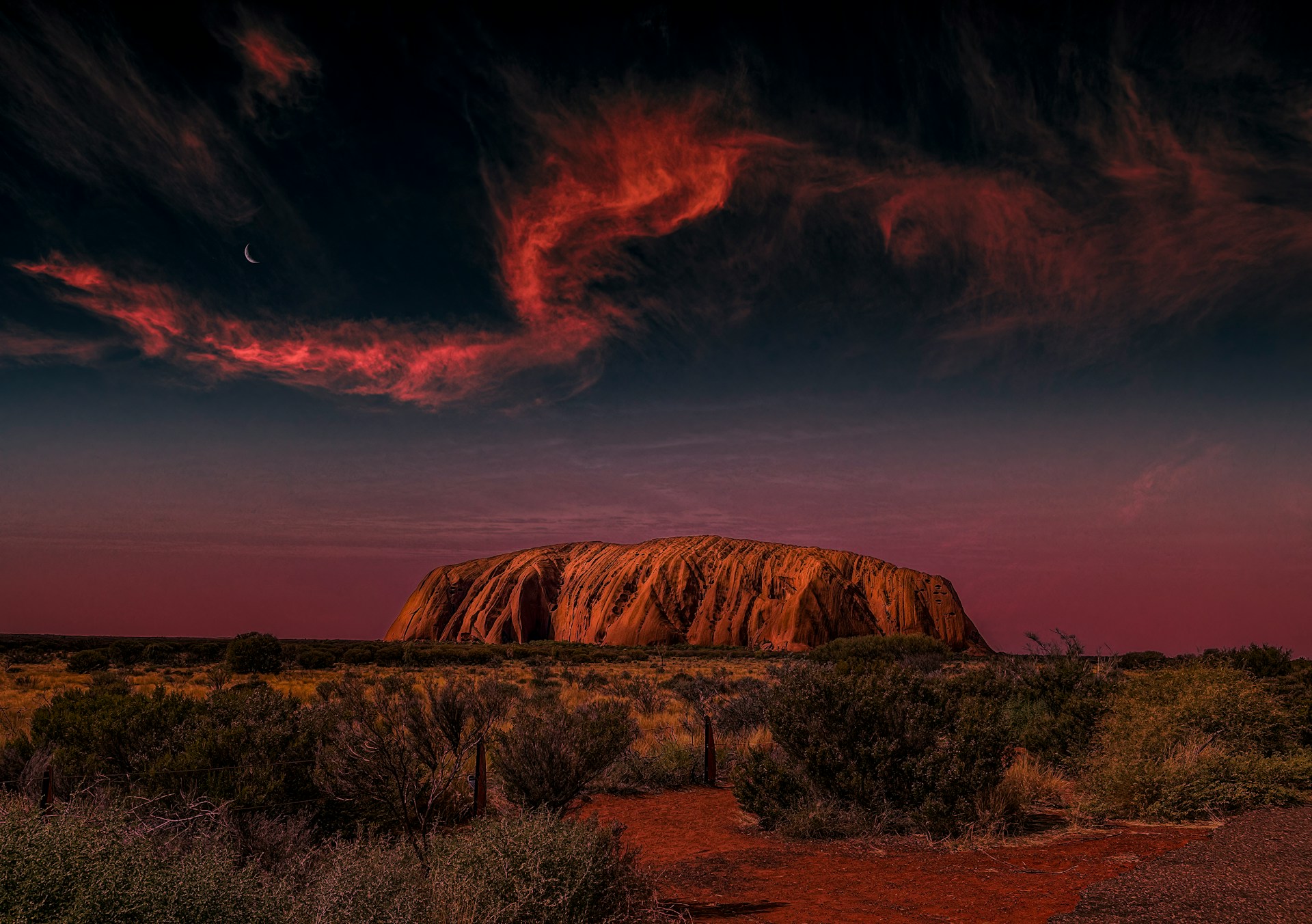
Stay Hydrated: Carry plenty of water, especially in the warmer months.
Pack for Different Seasons: Desert climates mean cool nights and cooler temperatures even in the warmer months, so pack both light and warm clothing.
Weather Conditions: Always check local weather conditions before heading out on hiking trails.
Further Information: Visit the Northern Territory website for updates, a product disclaimer, and current park details.
The best time to visit Alice Springs and Uluru is during the cooler months, when daytime temperatures are comfortable, skies are clear, and there are fewer weather challenges. With a well-planned Uluru itinerary, you can experience the Australian Outback, connect with indigenous culture, and see Australia’s most iconic landmarks in their best light. Whether it’s your first time or a return trip, this region offers a different experience every season and remains one of the top bucket list adventures in Australia.
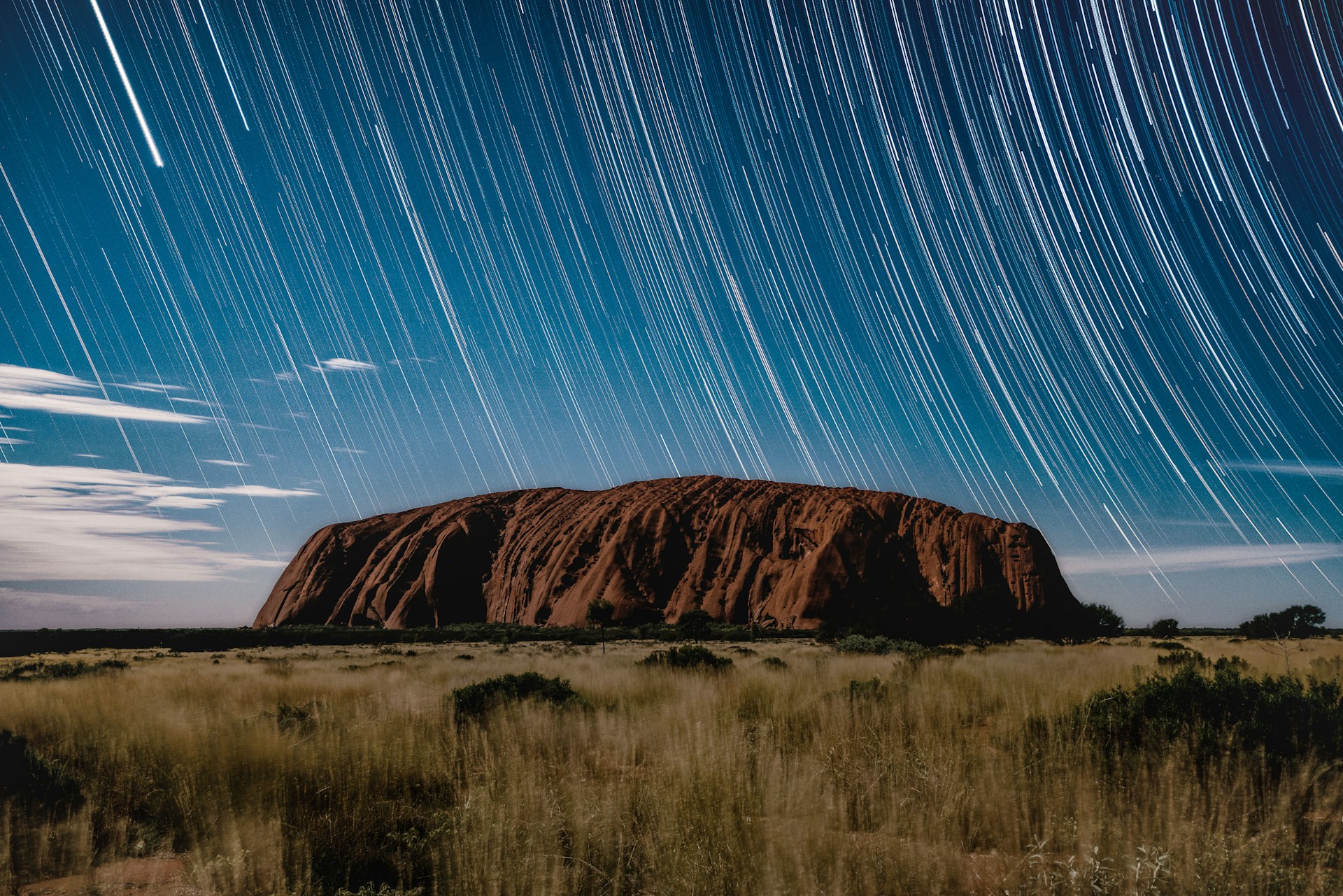 Learn More About Traveling to Australia in These Blog Posts
Learn More About Traveling to Australia in These Blog Posts
The Best Things To Do in Melbourne with Kids
Must-Visit Glow Worm Caves Gold Coast Travel Guide
Must-See Australia Landmarks for Your Bucket List
The Best Wineries in Australia to Visit | Travel Guide
Best Things to do in Geelong, Australia | Travel Guide
Whale Watching Sunshine Coast, Australia Travel Guide
READY TO EXPLORE THE RED CENTRE IN AUSTRALIA?
When you’re ready to book your next travel plans, contact one of our Tier One Travel consultants. They will find the perfect place for your next vacation and will craft something incredible that is suited to your unique needs and will make sure your travel plans will be as stress-free as possible.
One call; endless experiences!


